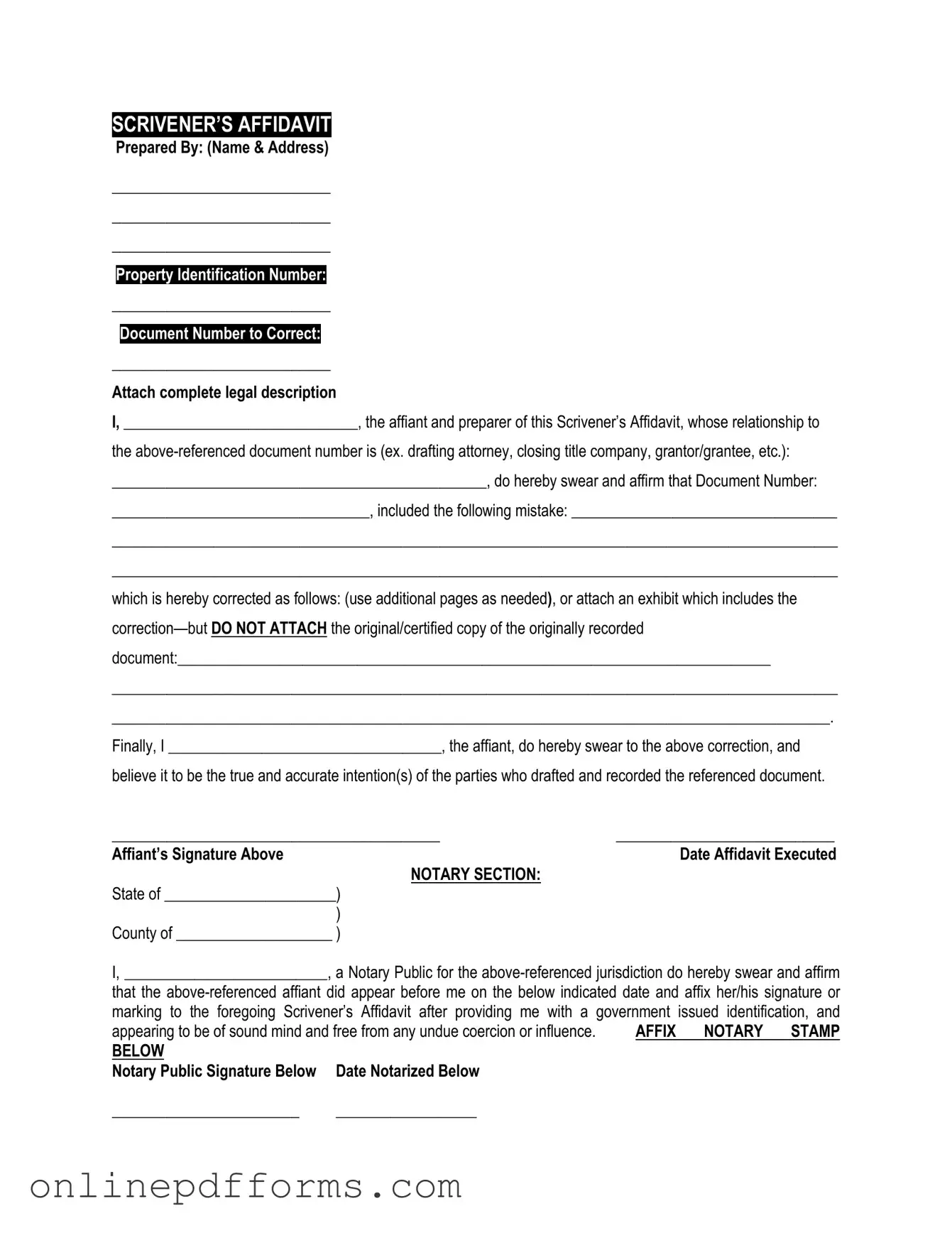The Scrivener's Affidavit is similar to a Declaration. Both documents serve to affirm the truth of certain facts, but a Declaration is typically a written statement made under penalty of perjury. While a Scrivener's Affidavit is often used to correct clerical errors in legal documents, a Declaration can be used in a variety of legal contexts, including court proceedings. Each document is intended to provide clarity and support for claims made in legal matters.
Another document that shares similarities with the Scrivener's Affidavit is the Affidavit of Correction. This affidavit is specifically designed to rectify mistakes in recorded documents, such as deeds or contracts. Like the Scrivener's Affidavit, it is sworn under oath and serves to clarify the original intent of the parties involved. Both documents aim to ensure that the public record accurately reflects the true agreement or facts.
The Affidavit of Identity is also comparable. This document is used to verify a person's identity, often in situations involving legal transactions or court cases. While the Scrivener's Affidavit focuses on correcting errors, the Affidavit of Identity confirms that the individual signing the document is who they claim to be. Both serve to establish credibility and trust in legal proceedings.
When dealing with the complexities of vehicle ownership and management, understanding the necessary legal documents is essential. One such important document is the Motor Vehicle Power of Attorney, which allows an individual to designate another person to handle titling and registration tasks on their behalf in Texas. For detailed guidance on how to properly complete this form, visit this page.
A similar document is the Power of Attorney. While a Scrivener's Affidavit addresses clerical errors, a Power of Attorney grants authority to another person to act on one’s behalf in legal or financial matters. Both documents require signatures and may need to be notarized, ensuring that the intentions of the parties are documented and legally recognized.
The Certificate of Authenticity is another related document. This certificate is used to verify the authenticity of a signature or a document, often in transactions involving valuable items or historical documents. While the Scrivener's Affidavit corrects clerical errors, the Certificate of Authenticity serves to confirm that a document is genuine, providing reassurance to parties involved in a transaction.
Lastly, the Warranty Deed shares some similarities. A Warranty Deed is used in real estate transactions to guarantee that the seller has clear title to the property being sold. While the Scrivener's Affidavit may be used to correct an error in such a deed, both documents aim to protect the interests of the parties involved by ensuring that all information is accurate and trustworthy.
